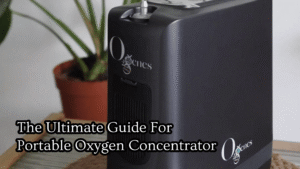Hyperbaric oxygen therapy (HBOT) is a medical treatment that has gained recognition for its potential to accelerate the wound healing process in various conditions. By subjecting patients to higher atmospheric pressures and high concentration oxygen, HBOT can significantly improve tissue oxygenation, aiding the body’s natural healing mechanisms. This approach has become increasingly valuable in the field of wound care, offering hope to individuals struggling with chronic or non-healing wounds.
We aim to provide you with an overview of the role of hyperbaric oxygen therapy in wound healing. We’ll address common questions about its effectiveness, safety, and the types of wounds that can benefit from this innovative treatment.
Today several approved applications and indications exist for HBOT. HBOT has been successfully used as adjunctive therapy for wound healing. Non-healing wounds such as diabetic and vascular insufficiency ulcers have been one major area of study for hyperbaric physicians where use of HBOT as an adjunct has been approved for use by way of various studies and trials.
HBOT is also indicated for infected wounds like clostridial myonecrosis, necrotising soft tissue infections, Fournier’s gangrene, as also for traumatic wounds, crush injury, compartment syndrome, compromised skin grafts and flaps and thermal burns. Another major area of application of HBOT is radiation-induced wounds, specifically osteoradionecrosis of mandible, radiation cystitis and radiation proctitis. With the increase in availability of chambers across the country, and with increasing number of studies proving the benefits of adjunctive use for various kinds of wounds and other indications, HBOT should be considered in these situations as an essential part of the overall management strategy for the treating surgeon.
FAQs
1: What is hyperbaric oxygen therapy (HBOT)?
A1: Hyperbaric oxygen therapy (HBOT) is a medical treatment that involves breathing 100% pure oxygen in a pressurized chamber, typically at higher pressures than atmospheric levels. It’s often used to promote healing in various medical conditions, including wounds.
Q2: How does HBOT aid in wound healing?
A2: HBOT helps wound healing by increasing the oxygen supply to tissues. Oxygen is vital for the body’s natural healing processes, and in a hyperbaric chamber, it can be delivered at higher concentrations, enhancing tissue repair, reducing inflammation, and preventing infection.
Q3: What types of wounds can benefit from HBOT?
A3: HBOT is used for various wounds, including diabetic foot ulcers, non-healing surgical wounds, radiation-induced tissue damage, and more. It’s also considered in cases where there’s a risk of tissue loss due to poor blood supply.
Q4: Is HBOT safe for wound healing?
A4: When administered by trained healthcare professionals in approved settings, HBOT is generally safe. It is essential to follow medical recommendations and undergo a thorough evaluation to determine the appropriateness of HBOT for your specific wound condition.
Conclusion
Hyperbaric oxygen therapy (HBOT) has emerged as a promising option for individuals with non-healing wounds, diabetic foot ulcers, and other complex tissue injuries. By delivering oxygen at higher pressures, HBOT helps the body overcome barriers to healing, reducing inflammation, preventing infection, and promoting tissue repair.
While HBOT offers potential benefits, it’s crucial to remember that its application should be guided by healthcare professionals. The number of sessions and the specific treatment plan will vary based on the patient’s condition. In the right circumstances, HBOT can be a valuable addition to wound care strategies, improving the quality of life for those affected by difficult-to-treat wounds.






